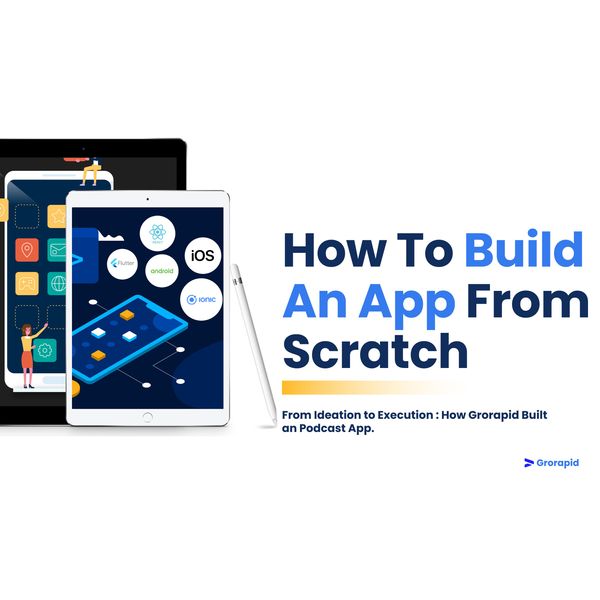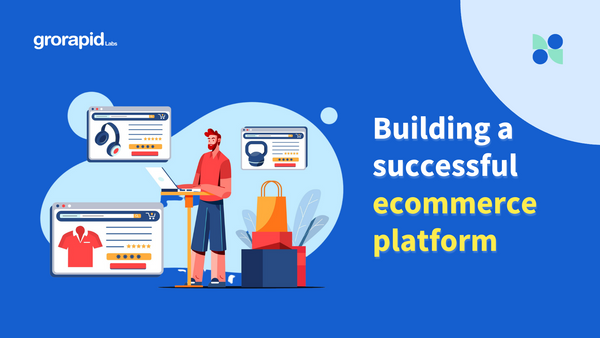Build with No-Code: How No-Code is revolutionizing the software development
You have an idea to execute but don’t know how to code. No need to worry anymore as No-Code got you covered. Living in a world where technology is evolving every day, one needs to be updated with the new industry norms. The need for developers to keep up with the pace of this new trend is becoming more and more crucial as this new world of technology progresses to replaces the old one.
In between all this chaos, No-Code comes as a boon for those who want to start something of their own without getting to deal with difficult programming languages.
What is No-Code?
No-Code makes software development simple by enabling anybody to write programs without the need for conventional coding skills. It permits users to perform customization and deployment through the utilization of basic drag-and-drop tools, interfacing, and pre-built components. It simplifies development by allowing non-technical individuals to take part.
While Low-Code finds a middle ground, it is excellent for complicated programs that need little to no coding. On the other hand, No-Code includes beyond app development to involve data analysis, artificial intelligence, and process automation, enabling flexibility in modern technology.
What’s the difference between No-Code, Low-Code, and Custom Code?
As there are different methods to develop the software, they differ in their parameters. You can choose to go with a certain type of development as per the time and budget you have. Now let’s look at different development methods and their advantages.

What are some popular No-Code tools?
From analytics to website building, No-Code deals in all types of tools. They are broadly classified into the following categories:
Mobile app development
If you want to develop a mobile app from scratch, you need to have an understanding of how it is built, and for that, a comprehensive guide comes in handy. Heading forward, here are some No-Code tools for mobile app development.
- Adalo
Adalo permits clients to make mobile apps with a drag-and-drop interface, and it supports highlights like databases, client confirmation, and integrations. - Bubble
Bubble is a tool where one can build web and mobile applications with a visual editor. It includes a variety of parts and functions, which include processes, databases, and responsive tools for design. - Airtable
Airtable is a No-Code tool that usually combines the ease of use of a spreadsheet with all the features of a database. Users may also organize and save their application data in a very customizable fashion that looks great.
Website / Web App development
- Webflow
Webflow allows users to create responsive and interactive websites without writing any code. It has a graphical interface for planning adding elements, layouts, and changing styles. - Shopify
Shopify is a popular web tool that lets users construct and sell shops on the internet. It deals with many features which include customized layouts, payment gateways, and some marketing features. - Grorapid
Grorapid is known as a No-Code development tool that gives clients the capacity to make web applications and websites without the requirement for custom coding. They have many tools and features to make applications particular to client needs, such as frame builders and predefined formats. - Squarespace
Squarespace presents itself as a No-Code site builder that helps clients make websites, web journal sites, profiles, and small commerce websites by using their easy to use UI. - Carrd
Carrd is a simple, one-page website builder designed for creating landing pages, personal profiles, and small web projects. It deals with a modest approach to making a web design.
Automation / Workflow
- Zapier
Zapier connects over 2,000 different apps, allowing users to automate workflows and tasks between them. This can include tasks like automatically sending emails, adding leads to CRM systems, and more. - Softr
Softr enables users to create client portals, internal tools, and social hubs without the need for coding. It deals a range of templates and modules for adapting. - HubSpot
Hubspot is a CRM tool mainly used for inbound marketing, sales, and customer service. It enables companies to reach out to customers through an array of channels, including social media, email marketing, content marketing, and more.
These are only a few tools that we have mentioned here. If you want to know more of these tools you should click on the button given below.
What are some possible use cases of No-Code?
With the help of No-Code tools, one can find solutions to their problems. Some major use cases of No-Code are discussed below:
- Custom software solutions
Custom software applications tailored to specific business needs. This mainly includes project management tools, CRM, and inventory management. - E-commerce platforms
Entrepreneurs can create robust e-commerce platforms without coding. They can design product listings, set up payment gateways, manage orders, and even integrate with shipping services. - Mobile apps and prototypes
No-Code tools like Adalo and Grorapid enable the creation of mobile apps without coding. This can range from interactive prototypes for user feedback to fully functional apps for various purposes. - Marketplace and community hubs
Business owners can build online marketplaces and community hubs that connect buyers and their sellers, it also fosters user engagement, and facilitates transactions. - Internal tools and dashboards
Entrepreneurs can develop custom internal tools for their teams, such as project management dashboards, CRM systems, or inventory management tools. - Workflow automation and process optimization
Numerous business operations may be automated with the use of no-code platforms like Hubspot, Zapier, and Softr, increasing productivity and lowering manual tasks. - AI and chatbots
No-Code AI platforms can be used to develop chatbots for customer service, lead generation, and even more advanced applications like natural language processing. - Data analysis and reporting
No-Code platforms like Google Data Studio and Tableau allow for the creation of interactive reports and dashboards to analyze and present data.
These use cases demonstrate the wide range of options open to any business owner wishing to start an IT company using No-Code solutions. The versatility and availability of No-Code technologies, which do not require coding skills, enable anybody to create more creative ideas.
How to get started with No-Code development?
Define your idea and market
You can think of a specific problem statement you want to solve. Consider the areas where No-Code tools can give a solution. After you have a problem statement, the next step is to conduct market research to understand the target audience and the future of the product or service that you are building. This could assist you in developing your company idea and in analyzing the concept you have.
Choose your No-Code tool
Identify the specific No-Code tools that align with your business idea and requirements. For example, if you're building a website or web app, consider using platforms like Grorapid or Webflow.
Building the MVP
Design a minimal version of your product or service that addresses the core needs of your target audience. Focus on delivering key features that demonstrate the value of your solution. Use your chosen No-Code platforms to start building your MVP. Leverage templates, pre-built components, and available integrations to accelerate development.
If you want to test your idea without putting a hole in your pocket, Grorapid labs can help to get your app or webapp running in just days instead of weeks/months.
Test and gather feedback
Once your MVP is ready, conduct regular user testing and gather feedback from potential customers. Use this feedback to refine and enhance your product. Develop methods for consumer support and interaction. To answer inquiries smoothly and give exceptional service, use No-Code chatbots or customer care solutions.
The No-Code transition helped speed up software development and inspired a new age of creativity, which has changed the flow of Internet commerce. Whether it's e-commerce platforms or AI algorithms, business owners can realize their ideas quickly by utilizing straightforward interfaces and pre-built components. This accessibility has leveled the playing ground, allowing anyone to make rapid prototypes, followed by confirm, and improve. The potential is endless, resulting in a brand-new era of developing and solving problems. In the age of No-Code, the only barrier is one's own imagination, allowing entrepreneurs to alter sectors and drive digital growth.
Still, have some doubts about how to utilize No-Code for your business? Let's connect and we'll make sure that all your doubts get clear.




